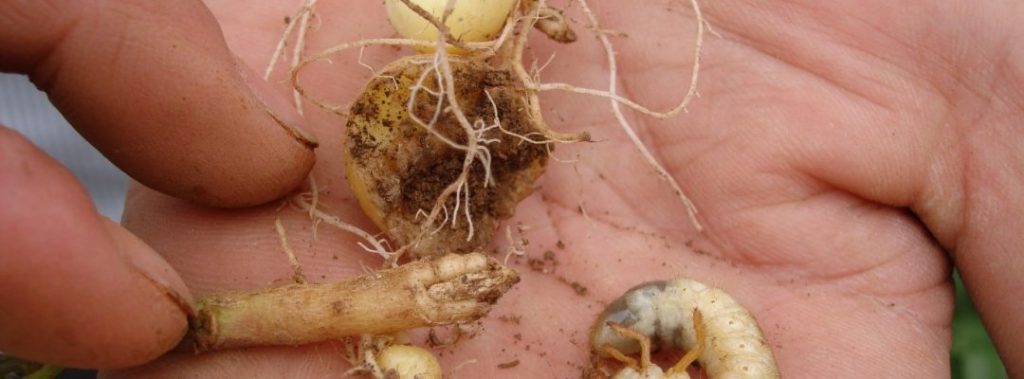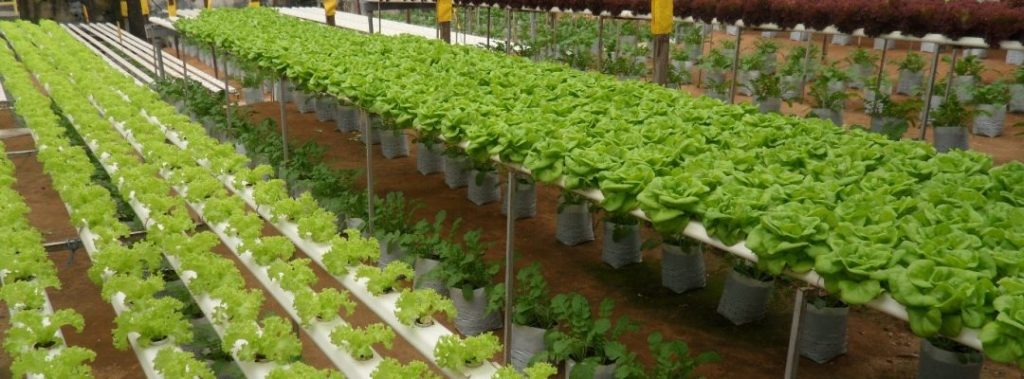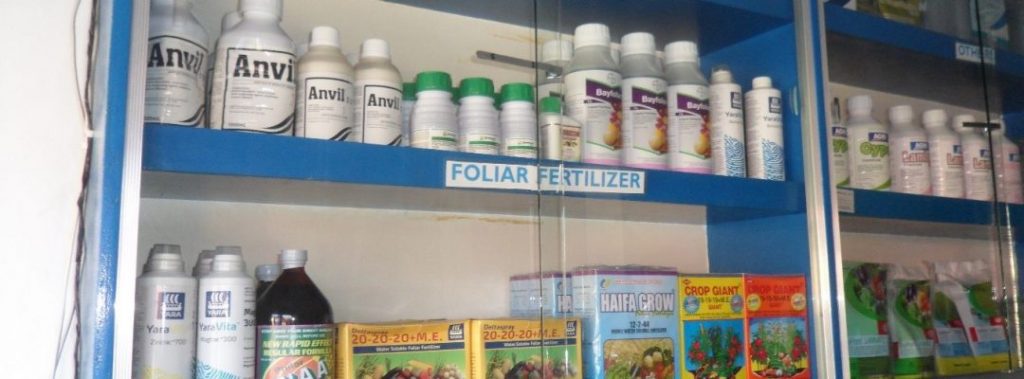
Amikor biopeszticidet vagy biokontroll-terméket választunk a kártevők kezelésére, akkor a megfelelő kérdéseket kell feltenni. Az alábbiakban összeállítottunk egy egyszerű listát, amely segít a helyes választásban, és a CABI BioProtection Portal támogatja és útmutatást nyújt Önnek.
Áttekintés
- Van-e engedélyezett biopeszticid vagy biokontroll termék az Ön kártevője ellen?
- Hatékony-e a biopeszticid vagy biokontroll termék az Ön körülményei között (fedett növénykultúra vagy szántóföldi használat)?
- Biztonságos-e a biopeszticid termék a környezetre és az emberi egészségre nézve?
- Vannak-e nem kívánt hatások a beporzókra és a természetes ellenségekre?
- Kompatibilis-e az Ön által használt egyéb növényvédelmi gyakorlatokkal?
- A biopeszticid vagy biokontroll termék elérhető helyben?
- Gazdaságilag életképes-e a biopeszticid/biokontroll termék használata?
1. Van-e engedélyezett biopeszticid vagy biokontroll termék az Ön kártevőire?
Ez egy kritikus első lépés a biopeszticid kiválasztásában, és a CABI BioProtection Portal ebben tud igazán segíteni. A folyamat elindításához a portál használatával:
- Először válassza ki az országot
- Ezután válassza ki a termést
- Végül válassza ki a kártevőt, és nyomja meg a "Keresés" gombot
Ez a művelet ezután megjeleníti azoknak a termékeknek a listáját, amelyeket országa hatóságai jóváhagytak az Ön konkrét problémájára. Nem szükséges mindig tudnia a kártevő tudományos nevét, mivel a portál gyakran tartalmazza a közönséges neveket is.


2. Hatékony-e a biopeszticid vagy biokontroll termék az Ön körülményei között (fedett növénykultúra vagy szántóföldi használat)?
Ellenőrizze a címkét, és ideális esetben konzultáljon egy tanácsadóval, hogy megbizonyosodjon arról, hogy a termék megfelel-e az Ön körülményeinek.
Például egyes biopeszticideket úgy terveztek, hogy kizárólag üveg alatt működjenek, de másokat szabadföldre is ki lehet vinni – ezeknek a sajátosságoknak a létezésének ismerete létfontosságú a megfelelő termék kiválasztásához.
3. A biopeszticid termék biztonságos a környezetre és az emberi egészségre?
A termékcímkék a CABI BioProtection Portal tájékoztatást ad a lehetséges óvintézkedésekről a biopeszticidek használata során – különösen a kezelő egészségére vonatkozóan az alkalmazás és az ártalmatlanítás során, valamint a környezetet fenyegető kockázatokról.
További helyek, ahol útmutatást és biztonsági ajánlásokat találhat a jelentkezéshez, a következők:
- Országos Orvostudományi Könyvtár: Nemzeti Biotechnológiai Információs Központ
- PPDB: Pesticide Properties DataBase
- ECHA: Európai Vegyi Ügynökség
Ha a biopeszticid potenciális veszélyt jelent a környezetre, meg kell fontolnia, hogyan és mikor alkalmazza, valamint azt is, hogy hová dobja el a maradékokat – például ha a talajvíztől távol van.
Ha a termék egészségügyi aggályokat vet fel, egyéni védőfelszerelést (PPE) kell viselnie, vagy fontolóra kell vennie olyan alkalmazási rendszereket, amelyek minimalizálják az expozíciót.


4. Vannak-e nem kívánt hatások a beporzókra és a természetes ellenségekre?
A nem célszervezetekre vonatkozó kockázatokról általában a termék biztonsági adatlapján és címkéjén található információ. Ha nem, akkor más információforrások, például a peszticidek mellékhatásaira vonatkozó adatbázisok megadhatják ezt az információt, pl. Nemzetközi Biológiai és Integrált Ellenőrzési Szervezet és a Koppert mellékhatások adatbázisa.
Fontos megjegyezni, hogy bizonyos esetekben mérsékelheti a nem célzott hatásokat. Például, ha fennáll a potenciális kockázat a beporzókra nézve, korlátozhatja az alkalmazás(oka)t a termésnövekedés korai szakaszára és/vagy amikor nincsenek virágzó növények.
5. Kompatibilis-e az Ön által használt egyéb növényvédelmi gyakorlatokkal?
Lehetséges negatív vagy pozitív kölcsönhatás a tevékenységek között? Tudnia kell, hogy a biopeszticid vagy biokontroll termék mennyire kompatibilis a kártevők elleni védekezésben végzett egyéb tevékenységekkel.
Egyes biopeszticidek – például a rovarirtó gombák – körültekintő időzítést igényelhetnek a gombaölő permetezés körül, hogy ne gátolják az aktivitást.
Ezzel szemben lesznek olyan biopeszticidek, amelyek tökéletesen kompatibilisek a vegyi növényvédő szerekkel. Ez az, ahol a tanácsadók és a műszaki termékinformációk olyan fontosak lehetnek.
6. Kapható-e helyben a biopeszticid vagy biokontroll termék?
Regisztrált biopeszticid/biokontroll termékeket talált a problémájára, és ezek kompatibilisek az Ön állapotával és egyéb gyakorlataival, de meg tudod szerezni a termékeket?
A CABI BioProtection Portal , partnereivel együttműködve meg tudja mondani, hogyan és hol vásároljon termékeket, és kapcsolatba léphet beszállítókkal is, akik boldogan beszélnek az Ön igényeiről.


7. Gazdaságilag életképes-e a biopeszticid/biokontroll termék használata?
A befektetés megtérülésének megértéséhez használja a gyártótól vagy szállítótól származó adatokat a termék helyi árával kombinálva. Lesznek egyéb szempontok is, mint pl.
- Szükség lesz-e ismételt pályázatokra?
- Megtakarítható-e az egyéb költségek?
- Hozzájárul-e a biopeszticidek/biokontrollok használata a talaj egészségének és biológiai sokféleségének hosszú távú javulásához, valamint a termelés fenntarthatóságához?
A fenti pontokat figyelembe véve, és a CABI BioProtection Portal , könnyen azonosíthatja és megszerezheti az országában elérhető biopeszticid- és biokontroll-termékeket, és információkat szerezhet az adott növényekkel és kártevőkkel kapcsolatos lekérdezésekhez.
